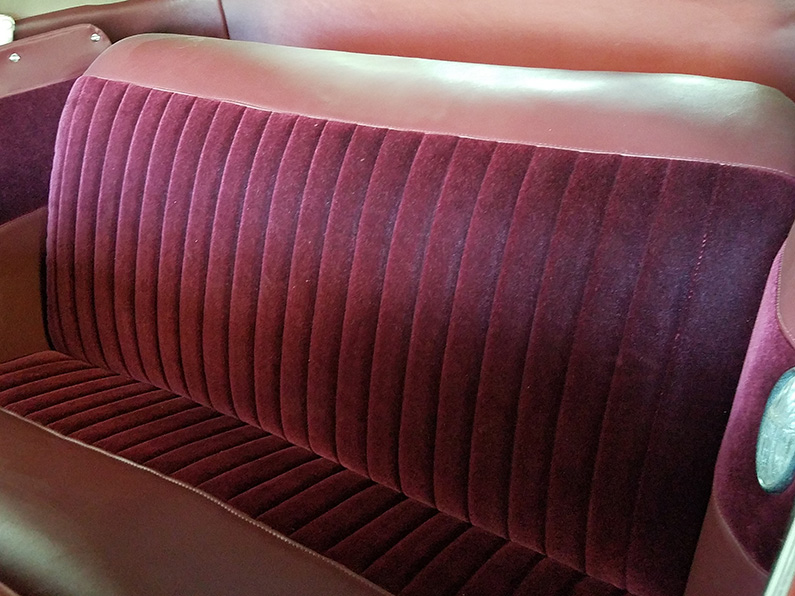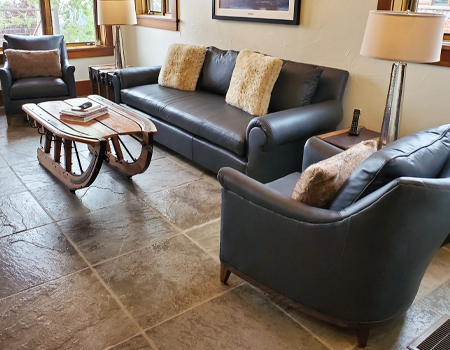Bring Back, Don't Change: Upholstery Repair Solutions You Can Trust Fund
Bring Back, Don't Change: Upholstery Repair Solutions You Can Trust Fund
Blog Article
The Ultimate Overview to Furniture Fixing Methods
In the world of furniture maintenance, the art of furniture repair work is a skill that can breathe brand-new life right into damaged pieces and preserve treasured belongings. Keep tuned as we decipher the details of this craft and unveil the secrets to mastering furniture repair techniques that will boost your furnishings restoration endeavors.
Assessing Upholstery Damage
When analyzing furniture damage, it is necessary to carry out a detailed examination to precisely figure out the extent of the problems existing. This preliminary action is crucial in creating a comprehensive fixing plan that deals with all elements of the damages properly. Begin by aesthetically inspecting the furniture for any type of noticeable splits, slits, stains, or discoloration. Take note of the place and dimension of each imperfection as this info will certainly guide the repair procedure.
Next, assess the hidden framework of the furniture to look for any type of damages to the frame, springtimes, or extra padding. Occasionally, the damage might not be immediately noticeable on the surface but could substantially influence the general stability of the upholstery. By extensively taking a look at both the outside upholstery and inner elements, you can make certain that all issues are identified and properly dealt with throughout the repair process.
Furthermore, take into consideration the kind of furniture product used as various textiles and natural leathers might require certain repair work strategies. upholstery repair. Understanding the material buildings will assist in picking the most suitable repair methods and items to accomplish optimal results
Crucial Devices and Materials
To successfully carry out furniture repair work, having the ideal tools and products is paramount for accomplishing specialist outcomes. Necessary tools for upholstery fixing include a staple gun for securing fabric, furniture needles and string for sewing, scissors for reducing textile, a rubber mallet for touching in furniture components, and pliers for removing old staples and nails. Additionally, having a material marker for outlining patterns, a seam ripper for undoing seams, and a warm glue weapon for fast fixes can be beneficial. Materials such as upholstery fabric, foam webbing, extra padding, and batting are vital for changing damaged components. It is likewise crucial to have a range of upholstery tacks, nails, and staples accessible for securing material and trim. Adhesives like material adhesive or spray adhesive serve for sure repair work. By ensuring you have the needed tools and products before starting an upholstery repair task, you can work successfully and successfully to bring back furnishings to its previous magnificence.
Preparing the Furnishings Surface Area
Preparation of the furnishings surface is a critical initial action in guaranteeing the effective end result of any type of furniture repair service job. Prior to starting any repair, it is necessary to completely cleanse the furniture surface area to eliminate dirt, dirt, and any type of other debris that might interfere with the adhesion of brand-new products. This can be done using a hoover, a soft brush, or a moist fabric, depending on the sort of furnishings and the degree of dirt existing.
As soon as the surface is tidy, any kind of loosened or broken furniture material, extra padding, or springs must be thoroughly removed. This step is critical to guarantee that the brand-new products stick safely and that the repaired upholstery keeps a professional and smooth look. Additionally, any kind of old staples or tacks ought to be drawn out, and the surface area should be evaluated for any structural damage that might need to Learn More Here be dealt with before proceeding with the repair.

Fixing Splits and Openings
After guaranteeing the furnishings surface is without particles, dirt, and dirt and removing any damaged or loose upholstery materials, the next step in upholstery repair work includes dealing with splits and openings in the material. Fixing rips and holes in furniture can assist expand the life of your furnishings and recover its visual allure. One typical technique for dealing with little splits and openings is by utilizing a needle and thread to sew the sides of the damaged area back together. For bigger holes or splits, a patch of fabric can be made use of to cover and strengthen the broken section (upholstery repair). Fabric glue or adhesive can additionally be made use of to secure the spot in location. It is crucial to meticulously match the shade and appearance of the patch fabric to the original furniture for a smooth repair. Once the tear or opening is fixed, make sure that the location is properly cleansed and dried out prior to using the furniture once more to prevent any type of more damage.
Removing Smells and spots
Dealing with persistent discolorations and remaining smells in upholstery calls for a targeted and complete strategy to guarantee reliable remediation of the fabric's appearance and quality. Spots can be caused by different materials such as food spills, animal mishaps, or beverage accidents, while smells usually stem from smoke, animal dander, or spills permeating the furniture fibers. Regular maintenance and punctual focus to spills can assist in protecting against deep-rooted stains and odors, protecting the upholstery's condition.

Conclusion
To conclude, understanding upholstery repair work techniques needs careful analysis of damage, the usage of necessary tools and materials, correct preparation of the furniture surface area, and the experienced repair service of rips, smells, openings, and spots. By adhering to these actions, individuals can properly lengthen the life and recover of their furniture.

Crucial tools for furniture fixing consist of a staple weapon for safeguarding material, upholstery needles and string for stitching, scissors for reducing fabric, a rubber club for tapping in furnishings parts, and pliers for eliminating old staples and nails. By ensuring you have the essential tools and materials before beginning an upholstery repair task, you can work efficiently and efficiently to recover furnishings to its previous magnificence.
Prep work of the furniture a knockout post surface area is a vital more tips here first action in making sure the effective result of any type of upholstery repair job.After guaranteeing the furniture surface area is complimentary of dirt, dirt, and particles and removing any type of broken or loosened furniture products, the next action in upholstery repair service includes resolving rips and openings in the textile - upholstery repair. Repairing rips and holes in furniture can help extend the life of your furnishings and restore its visual appeal
Report this page